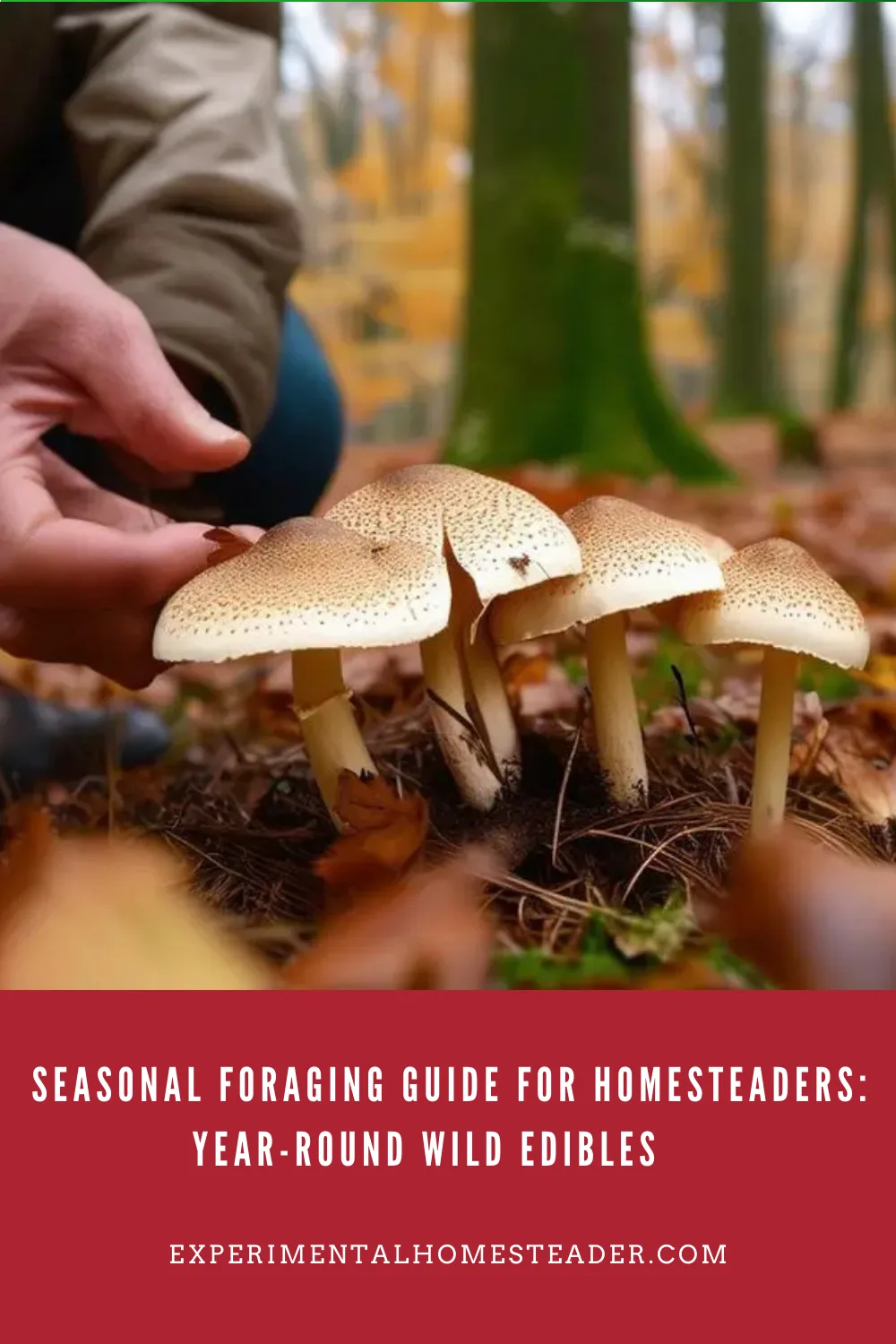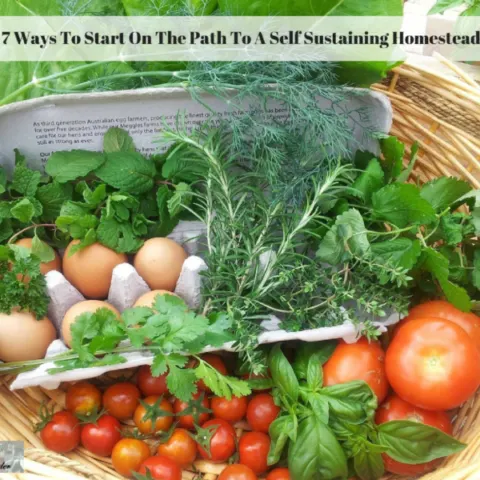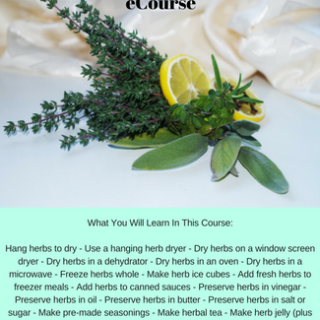Foraging through the seasons is a key skill that benefits homesteaders, offering both nourishment and the joy of self-sufficiency.
A well-rounded seasonal foraging guide helps you know what’s available right in your own backyard, whether it's fresh spring greens, fall nuts, or those hardy berries that brave the winter frost.
Each season has its unique offerings, and knowing when and where to look for them can provide a steady stream of fresh, wild ingredients for your kitchen.
Plus, the more you forage, the more in tune you become with the natural cycles around you—a rewarding experience in itself.
The beauty of foraging is that it not only saves you money but also allows you to enjoy ingredients in their prime, often more nutrient-rich than store-bought produce.
Seasonal foraging is a perfect way to supplement your homestead’s harvest while creating a deeper connection with the land you live on.
Spring Foraging: A Season Of Fresh, Vibrant Greens
Spring brings with it an explosion of fresh, flavorful greens and fragrant herbs, perfect for any homesteader looking to forage.
One of the first to appear is wild garlic (often called bear's garlic).
Keep an eye out for its shiny, broad leaves and white star-like flowers in moist, shaded woodlands.
It’s a true treasure for your spring soups, pestos, or salads.
The flavor is mild yet garlicky, a perfect addition to brighten up any dish.
Sweet woodruff is another springtime gem, known for its subtle, sweet aroma.
You'll find it growing under shady trees or along forest edges.
Its delicate leaves can be used to infuse drinks like homemade syrups or teas, and it also adds a wonderful flavor to desserts.
Dandelions: A Forager’s Hidden Gem
And don’t forget the dandelion!
Often viewed as a pesky weed, dandelions are actually one of the most versatile and nutritious plants you can forage in spring.
Their bright yellow flowers are a sign that it’s time to harvest their tender, young leaves.
The leaves have a slightly bitter flavor, but that bitterness mellows when paired with a tangy vinaigrette or blended into a smoothie.
Dandelion greens are packed with vitamins A, C, and K, making them a great, nutrient-dense addition to your spring diet.
You can also use the flowers to make dandelion, wine, syrup, or even fritters for a unique homestead treat.
The roots of dandelions shouldn’t be overlooked either, as they can be made into a tea or roasted and brewed into a caffeine-free coffee substitute— a great way to make use of the entire plant.
Whether you’re adding the leaves to a salad or experimenting with dandelion root coffee, this resilient plant offers a variety of ways to nourish yourself from your foraging adventures.
It’s truly a homesteader’s friend, offering bounty right in your own backyard.
Other Spring Edibles: Greens, Herbs, and Mushrooms to Forage
Though you may not stumble across wild asparagus in your local woods, spring markets are bursting with this beloved vegetable.
It's a must-have for seasonal cooking, whether you're grilling, steaming, or roasting.
Chickweed and miner’s lettuce are delicate, nutrient-rich greens perfect for fresh salads.
Wild violets and clover add a touch of color and flavor, while fiddlehead ferns offer a crunchy, unique side dish.
Ramps, with their garlicky flavor, are a sought-after delicacy.
Cattail shoots and pollen are versatile ingredients for soups or fritters.
Stinging nettle may require gloves to harvest, but its leaves are packed with nutrients, as are its cousins, dead nettle and henbit.
Garlic mustard, another spring green, makes a bold pesto, but do be aware of the invasive nature of this plant, so please pull it up by the roots when harvesting it to control its spread.
Willow bark can be harvested for its medicinal uses, while yarrow and plantain are handy for teas or poultices.
Cleavers, with their sticky texture, can be juiced or added to salads.
And for mushroom lovers, spring brings the prized morels, as well as oyster and porcini mushrooms—perfect for savory dishes and sauces.
Summer Foraging: A Bounty of Fruits and Herbs
Summer is a prime time for foraging, with an abundance of juicy fruits and fragrant herbs ready to harvest.
Whether you're exploring woodlands, parklands, or the edges of forests, there’s plenty to gather during the warm months.
The season kicks off with strawberries and raspberries, offering bursts of sweetness perfect for fresh snacking or homemade preserves.
As July rolls around, blueberries come into their own—nutrient-packed and delicious for both snacking and baking.
Cherries are ripe and ready for picking by June, and blackberries, which start in July, often stretch through September.
These wild gems are incredibly versatile, from topping ice cream to blending into smoothies or baking into pies.
Summer also brings a wealth of foraging options beyond fruits.
Keep an eye out for plantain, mugwort, lemon balm, mullein, and cattails.
Herbs like lavender, bee balm, calendula, and skullcap thrive, while flowers such as elderflower, wild rose, and St. John’s Wort make wonderful teas and tinctures.
Don’t forget wild edibles like fireweed, borage, Queen Anne’s lace, and bilberries for a diverse foraging experience throughout the summer season!
Autumn Foraging: Nature's Fall Harvest
As autumn sets in, the foraging focus shifts to hearty mushrooms, crisp apples, and rich hazelnuts.
This season is ideal for wandering through woodlands and green spaces, discovering nature’s hidden gems that bring a wholesome, nutritious touch to your fall meals.
Mushroom lovers will want to keep an eye out for parasol mushrooms and bay boletes.
Parasol mushrooms, with their slightly nutty flavor, are perfect for adding to autumn risottos or baking into savory pies.
Bay boletes bring a deep, earthy flavor to soups and stews, making them a must-have for seasonal cooking.
Just remember, always be absolutely sure of your mushroom identification before consuming anything!
Apples, which ripen between August and October, are a fall classic.
Whether you’re making cider, sauces, or simply enjoying them fresh, the bounty is endless during this time.
Hazelnuts are another autumn treat, usually ready to harvest in September and October.
You’ll often find them in lightly-wooded areas, and their rich, nutty flavor is a fantastic addition to both sweet treats and savory dishes.
Autumn also brings an abundance of other wild edibles.
Crabapples are great for making jellies, while wild mint and staghorn sumac fruit add unique flavors to teas and drinks.
Rose hips, packed with vitamin C, are perfect for syrups and jams.
Just remember to remove the seeds and hairs, as they can be irritating if ingested.
Black walnuts, puffball mushrooms, and acorns offer versatility in cooking, while persimmons, shagbark hickory nuts, and pawpaws are autumn’s hidden fruits that often surprise with their flavor.
Autumn foraging is truly a time to embrace the richness and variety of the wild harvest!
Winter Foraging: Hidden Gems in the Cold Months
Winter foraging may seem daunting, but there’s still a surprising variety of wild edibles waiting to be discovered.
Even in the coldest months, you can find nutrient-rich rose hips, sea-buckthorn, and blackthorn berries in urban parks, along riverbanks, and in the countryside.
These hardy berries not only add color to your pantry but also provide a much-needed boost of vitamins during the darker days.
Rose hips are packed with vitamin C and are ideal for making syrups, teas, or jams.
Their tart flavor is a wonderful addition to your winter recipes.
Sea-buckthorn, with its vibrant orange berries, is another winter gem.
Rich in vitamins A, C, and E, these berries can be transformed into jams, juices, or used as a bright garnish for winter dishes.
Blackthorn berries, also known as sloes, become perfect for harvesting after the first frost.
While too sour to eat raw, sloes are famous for making sloe gin or adding a rich depth of flavor to slow-cooked stews.
In addition to berries, conifer needles like pine, spruce, fir, and hemlock are excellent for teas, offering a refreshing, citrus-like flavor and a dose of vitamin C.
Juniper berries, found on evergreen bushes, add a peppery, piney flavor to meats and stews.
Winter foragers can also tap into the abundance of tree saps like birch, walnut, and maple, which can be boiled down into syrups or fermented into refreshing drinks.
Other cold-weather treats include maple tree seeds, dock seeds, and the small but mighty cranberries, wintergreen berries, and hawthorn berries.
If you're near water, keep an eye out for seaweed and kelp, both packed with minerals.
Mushrooms like winter chanterelles, oyster mushrooms, and chaga fungus also thrive in colder temperatures, along with medicinal mushrooms like turkey tail.
For those willing to dig a little deeper, you can find Jerusalem artichokes and chicory roots, both of which can be roasted for a hearty winter meal.
Don’t overlook usnea (lichen), reindeer moss, and Oregon grape, which are often overlooked but invaluable winter survival foods.
Winter Foraging Tips:
- Dress warmly in layers
- Bring a thermos of hot tea
- Use gloves when picking thorny berries
- Carry a small pocket guide for identification
Responsible Seasonal Foraging
Responsible foraging is crucial to preserve the environment and ensure that nature's bounty is enjoyed by all, including local wildlife.
Always start by positively identifying plants using a reliable field guide.
This step is vital to avoid mistakes with potentially harmful consequences.
When foraging, make it a point to leave enough for wildlife.
Many animals depend on these plants for their survival, and removing too much can disrupt the local ecosystem.
Harvest mindfully, taking only what you need and ensuring you leave plenty for other foragers and fauna.
Avoiding protected species is another cornerstone of responsible foraging.
Some plants are rare or endangered, and collecting them can speed up their decline.
Stay informed about the conservation status of plants in your area and avoid those that are protected by law or in danger of extinction.
Following local laws and guidelines is essential.
Different places have varying regulations regarding foraging. For example, foraging can be prohibited in national parks or certain nature reserves.
Always check the rules before you start picking.
By adhering to these guidelines, you're contributing to a more sustainable and harmonious interaction with nature.
Embrace this mindful approach, and foraging will become a rewarding experience that keeps you connected with the environment in a respectful and sustainable manner.
Responsible Foraging Checklist:
- Identify plants accurately
- Leave enough for wildlife
- Avoid protected species
- Follow local laws and guidelines
- Take only what you need
Foraging is an opportunity to engage with the environment in a mindful and sustainable way.
By following responsible practices, you can enjoy nature's bounty while preserving it for future generations.
Embrace the Year-Round Bounty of Foraging
Foraging is a year-round adventure, with each season offering its own unique harvest of wild edibles to enhance your homesteading lifestyle.
From the vibrant greens of spring to the hearty mushrooms of autumn and the resilient berries of winter, there's always something new to discover and enjoy.
Whether you’re looking to add fresh flavors to your meals or seeking nutritious supplements for your pantry, seasonal foraging can enrich your life and deepen your connection to the natural world.
To help you keep track of your foraging discoveries and make the most of each season, consider our comprehensive Foraging Journal.
It’s designed to be your ultimate companion, featuring observation sheets, plant profiles, location tracking, and harvest utilization sheets.
This journal will guide you through the foraging process, ensuring you capture every moment and make the most of your wild finds.
Embrace the full spectrum of seasonal bounty and enhance your foraging experience by grabbing your Foraging Journal today!
Frequently Asked Questions About Foraging
Q: What are some basic safety tips for beginner foragers?
A: Start with well-known, easy-to-identify plants. Always use multiple resources (books, apps, or experienced foragers) to confirm plant identification. Avoid foraging in areas that may be contaminated with pesticides or pollutants. And never consume a plant unless you’re 100% sure of its identity.
Q: How can I ensure that a mushroom is safe to eat?
A: Accurate identification is crucial. Use a detailed field guide, consult with experts, and compare multiple features like color, size, shape, and habitat. Avoid mushrooms with toxic look-alikes and never consume a mushroom unless you’ve positively identified it.
Q: What’s the best time of day for foraging?
A: Early morning or late afternoon are typically the best times. Plants and fungi are often easier to spot when the light is soft, and cooler temperatures can also make foraging more pleasant.
Q: Can foraging impact the environment?
A: Yes, foraging can impact local ecosystems if not done responsibly. Always forage sustainably by taking only what you need, leaving some behind for wildlife, and avoiding overharvesting any single species.
Q: Are there any common edible plants that are also medicinal?
A: Yes, many plants serve dual purposes. For example, yarrow is both edible and used medicinally for its anti-inflammatory properties. Similarly, dandelions are used for their nutritional benefits and also as a herbal remedy for various ailments.
Q: What should I do if I suspect I’ve eaten something toxic?
A: Seek medical attention immediately. Keep a sample of the plant or mushroom you consumed if possible, as this can help medical professionals identify the issue.
Q: How can I store foraged foods to keep them fresh?
A: Store perishable items like berries and mushrooms in the refrigerator. For longer-term storage, consider drying, freezing, or preserving in jars. Make sure to label and date all preserved items.
Q: Can foraging be done year-round in all climates?
A: Foraging opportunities vary by climate and season. In temperate regions, there are edibles available year-round, but the types of foraged foods will change with the seasons.
Q: How can I learn more about foraging in my area?
A: Join local foraging groups or clubs, attend workshops or foraging tours, and use regional field guides. Online forums and social media groups can also be great resources for connecting with local foragers.
Q: Are there any legal considerations for foraging?
A: Yes, always check local regulations regarding foraging on public lands. Some areas require permits, restrict certain activities, or have specific rules to protect wildlife and plant populations.
Q: What are some beginner-friendly foraged foods to start with?
A: Start with easily recognizable plants like dandelion greens, chickweed, and wild garlic. These are common, relatively easy to identify, and have many culinary uses.
Q: How can I make sure I’m foraging ethically?
A: Practice the “Leave No Trace” principle. Avoid disturbing the habitat, take only what you need, and leave the area as you found it. Educate yourself on local plants and ecosystems to ensure your foraging practices are sustainable.
Q: What should I carry with me when foraging?
A: Bring a foraging knife, gloves, a basket or cloth bags for collecting, and a field guide for identification. A notebook or smartphone for taking notes and pictures can also be useful.
Q: How can I involve my family in foraging?
A: Make it a fun and educational activity. Use foraging as an opportunity to teach about local plants and wildlife. Ensure everyone understands the importance of safety and responsible foraging practices.
Self-Sufficient Living
Explore the ultimate guide to self-sufficient living with our curated list of related blog posts. From food preservation to DIY projects and homesteading inspiration, find everything you need to thrive on your self-sufficiency journey. Perfect for beginners and seasoned homesteaders alike!
The Essential Guide To A Completely Self Sufficient Homestead
Learn how to start living on a completely self sufficient homestead today with this essential guide plus sign up for our FREE eCourse!
How To Be Self-Sufficient In An Apartment
Learn how to be self-sufficient in an apartment. Even if you live in a big city you can learn skills you will use one day on your homestead.
Thriving Through Self-Sufficiency: A Journey to a Balanced Life
Learn how to thrive through self-sufficiency: slow down, live intentionally, and find balance for a healthier and more sustainable lifestyle.
Top 5 Tips for Balancing the Self-Sufficient Lifestyle: Stay Organized, Motivated, and Successful
Discover how to balance the self-sufficient lifestyle with actionable tips for organization, motivation, and sustainable success.
Step-by-Step Guide to Self-Sufficient Living: One Small Step at a Time
Start small with this step-by-step guide to self-sufficient living. Simple, achievable tips to ease into a sustainable lifestyle.
7 Ways To Start On The Path To A Self Sustaining Homestead
A self sustaining homestead is a lot of work but you do get a lot of satisfaction knowing you are living the self sufficient life you've dreamed of.
A Beginner's Guide To A Self Sufficient Homestead Plan
Making a self sufficient homestead plan is the first step to accomplishing your goal of living on a self sufficient homestead.
Living The Homestead Lifestyle
Embarking on the homestead lifestyle is not easy. This is why I love Homegrown and Handmade by Deborah Niemann. The homestead tips are great!
Weapons To Include In Your Homesteading Self Sufficiency Survival Kit
Learn what weapons - both lethal and non-lethal - to include in your homesteading self sufficiency survival kit. Also learn why you need to include them.
Mockmill Flour Grinding Mill Makes It Easy To Grind Your Own Grain
The Mockmill flour grinding mill quickly and easily turns wheat berries into flour that is perfect for making freshly baked bread.
Homesteading Today In The USA
Although the Homestead Act of 1862 is no longer in effect, free land is still available for those wanting to try their hand at homesteading today.
How Much Land For A Homestead
When it comes down to the reality of how much land for a homestead you really need, it's much more than just a number. Learn what you need to consider.
What Homestead Living Is Really Like
Learn what homesteading living is really like. It's not always picturesque or romantic. In fact, sometimes it is difficult.
Food Security Preparedness - What To Do Before Disaster Strikes
Learn what food security preparedness skills you need to survive any natural or man-made disaster, and why you should grow your own food.
Learn To Be Self-Sufficient
Learn to be self-sufficient from Sheri Ann Richerson, a modern day self-sufficient woman with these eBooks and printables!
Self Sustainable Living Ideas Using Animals
Animals are a great way to help you acheive your self sustainable living ideas. Learn what animals are best for your self sufficiency plan.
Preserving Herbs For Winter Use eCourse
Do you love fresh herbs but wonder if there is an easy way to preserve them for the winter?
Do you seek other ways to use herbs other than just as a seasoning on food?
There are so many ways to preserve herbs for winter use – from various methods of drying them to freezing them, but it doesn’t end there.
Some of the best ways to preserve herbs in right in the foods you would normally incorporate herbs into – pre-made seasonings, teas, butter or oil.
Then this is the course for you!
What You Will Learn In This Course:
Hang herbs to dry
Use a hanging herb dryer
Dry herbs on a window screen dryer
Dry herbs in a dehydrator
Dry herbs in an oven
Dry herbs in a microwave
Freeze herbs whole
Make herb ice cubes
Add fresh herbs to freezer meals
Add herbs to canned sauces
Preserve herbs in vinegar
Preserve herbs in oil
Preserve herbs in butter
Preserve herbs in salt or sugar
Make pre-made seasonings
Make herbal tea
Make herb jelly (plus tips on how to use these)
























